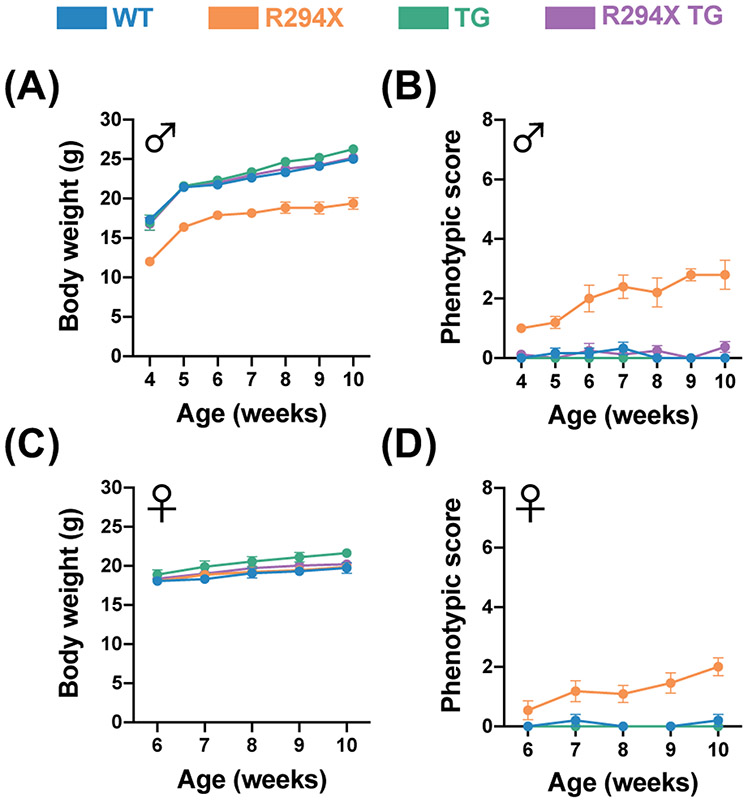Figure 1. Gross RTT-like phenotypes are rescued with MECP2 transgene in male and female R294X mice.
(A) Body weights of male R294X mice are lower than that of WT littermates at 4 weeks of age and beyond. This phenotype is rescued by MECP2 transgene in male R294X TG mice, whose body weights are not different from WT. (WT n=6, blue; R294X n=5, orange; TG n=9, green; R294X TG n=8, purple) (B) Male R294X mice exhibit progression of RTT-like phenotypes, as reflected by an increase in phenotypic score, which is rescued by MECP2 transgene. (WT n=6; R294X n=5; TG n=9; R294X TG n=8) (C) Female R294X mouse body weights are not different from that of WT littermates. (WT n=5; R294X n=11; TG n=7; R294X TG n=9) (D) Female R294X mice exhibit progression of RTT-like phenotypes, as reflected by an increase in phenotypic score, which is rescued by MECP2 transgene. (WT n=5; R294X n=11; TG n=7; R294X TG n=9)

